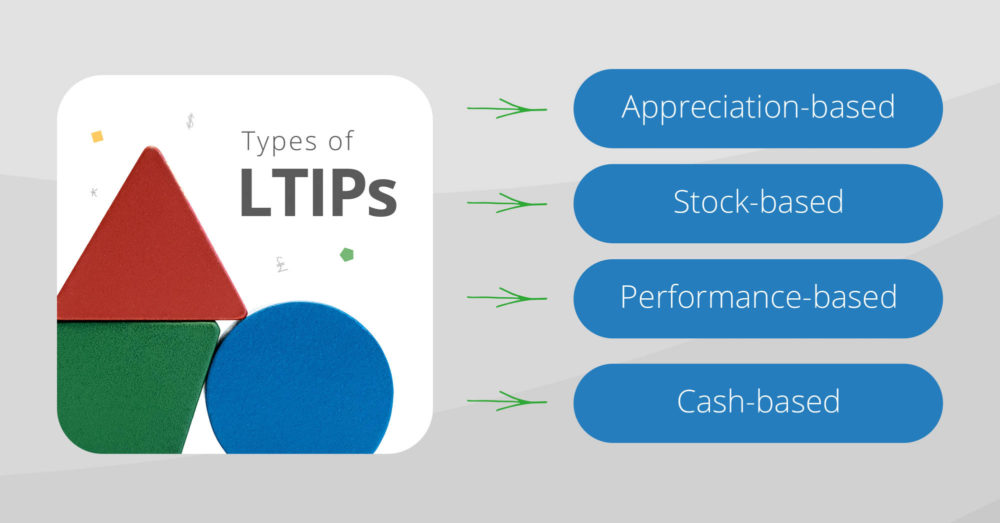If you give the same rewards every year, then you will get the same results.
Companies need to keep this mantra in mind as they think about the benefits they offer to employees, and how they encourage company growth.
Firstly, what does LTIP stand for?
LTIP means long term incentive plan. It is a great way to reward and motivate your employees, while also helping your company to succeed. But LTIPs come in all sorts of shapes and sizes – here’s a simple guide to help you find the best long term incentive plan design that suits your company.
Why do companies use LTIPs?
Simply put, part of an employee’s pay should be tied to the growth of the company – at least, for employees who can effect change in that growth. If they’re in a position to help the company grow, and they do, then they get paid more. If they don’t – then they don’t.
You can send all the memos you want, and present the most eye-catching PowerPoints ever created – it won’t make your employees act like owners. With LTIPs, you show your employees the most important areas to effect continuous growth (which just so happen to be the most important areas for the company) and their long-term pay holds them accountable for implementing it. And, if your LTIP rewards them with shares or options, then they have an additional incentive to help make the company grow.
The best part about LTIPs is that they focus on the long-term. This is a great benefit for two reasons. First, and the most obvious, is that it encourages employees to remain with the company. Employee turnover can be an unnecessary black hole for your profits – according to studies when a business replaces a salaried employee, it costs six to nine months’ salary, on average, to train their replacement. This is more of an issue these days when most employees only remain with a company for an average of two years.
Second, LTIPs encourage focusing on long-term profits. Short-term profits are great, yes, but they usually come at a cost. Oftentimes, they come at the expense of customer relationships and are unsustainable. LTIPs align your company’s interests with the interests of your employees over a long period of time. They’re not just trying to hit targets for this year, they’re trying to move the company forward while hitting targets that help the company sustain its growth over the next couple of years.
Long Term Incentive Plan Design
There are essentially four different LTIP designs.
- Appreciation-based means that the value of the employee’s award depends on how much the company’s value increases over time. These are common options or stock appreciation rights.
- Stock-based means that after a certain amount of time, the employee receives stock in the company.
- A performance-based award also means that the employee receives stock in the company, but it depends on their meeting certain goals, rather than time.
- Cash-based means that the employees receive a cash bonus.

Which one is right for you?
Naturally, different companies are going to have different needs. Depending on your industry and your jurisdiction, your company might be better suited to one of these. So, it’s important to understand the positives and negatives of each one.
Appreciation-based awards
For example, appreciation-based awards can have massive upsides for employees, particularly in startups and growing companies. It shows that both you and your employee have faith in the potential of the company. And it ensures that your employees are committed to the same goal that you are, while the vesting period makes it more likely that they’ll stay and remain focused. However, there is a risk with these awards. The upside might not show up after all if the company struggles.
Stock-based awards
Stock-based awards have similar positives, but the awards are guaranteed to have value when they vest. They also have a vesting period, which means that employees will stay with the company for longer. And their value is tied to the company’s value – once they own stock, then any growth is a profit. However, there is less room for the potentially massive gains that come from options. Because of that, and because they simply vest after a certain amount of time regardless of the employee’s performance, they don’t provide as much incentive for hard work.
Performance-based awards
Performance-based awards, on the other hand, ensure that employees are not just waiting for their vesting. In order to receive their bonus, the employees need to hit certain targets. It’s easy to see why this is an enticing plan for companies. However, you need to keep in mind that if the targets are not set correctly and are too hard to achieve, the employees could lose morale as they don’t receive anything.
Cash-based awards
Cash-based awards are generally given in jurisdictions or companies where share valuation is complicated. However, if possible, it’s best to avoid these. Cash flow is important to your company’s growth, and tying up a lot of it in a long term plan is not a great idea. Besides, it does not help your employees commit to the long term success of the company.
LTIPs and Vesting Periods: How to choose?
The most important feature of all these plans is the vesting – the timeline and/or requirements an employee needs to meet in order to receive their awards. You need to determine how long an employee needs to be with the company, or how many targets they need to meet.
There are two ways of vesting – cliff vesting and ratable vesting. Cliff vesting is what it sounds like. After a certain period of time, the employee receives the entire award. Ratable vesting is when the award vests a portion at a time. So, an employee might receive one-third of their shares each year for three years.
Again, which one you choose depends on the needs of your company, as both have positives and negatives. Cliff vesting means that if an employee leaves before their vesting, then they leave with no shares. This means that less stock leaves the company. However, depending on the length of time, it can mean that employees work for a long time with nothing to show for it. Whereas in ratable vesting, they’re receiving a portion for each year.
Designing an incentive plan: Getting your LTIP started
Step one – choose your design
LTIPs are a very broad category of a compensation scheme. As such, there is a wide range of designs to pick from. There are two major considerations when choosing your plan design – incentive and vesting schedule.
The incentive you pick is very important and needs to reflect the type of company and average employee you have.
Stock options are a great incentive if you’re an up-and-coming company, whereas stock awards are great for larger and more established businesses.
Stock options carry more risk, as well as more reward, whereas share awards are safer, but have less potential for major growth. Or, there are cash bonuses and various other ways of rewarding great work.
The vesting schedule is also an important consideration. Vesting refers to the goals the employee has to meet in order to receive their incentive. So, if an award vests after three years, once the employee has completed three years of service then they receive their award. Or, if there are performance conditions – for example, the employee has to hit certain sales targets – their award vests after they reach these milestones.
There are different types of time-based vesting (cliff, ratable, etc.) as well as different types of performance-based vesting. The most important thing to consider again is what suits your business best, and what will incentivize your employees most.
Step two – check your compliance
Compliance is the most important step to consider. Because you need to know before you start looking into launching your plan, that you’re following all the rules of all your potential jurisdictions. Particularly if you have multiple offices in different countries – each of these countries will have its own, very specific and very enforceable rules around equity compensation and tax. You will need to find an LTIP that works in all jurisdictions, for all participants.
You also need to ensure that you will be able to gather and retain your employees’ data in a compliant way. The rules of GDPR, especially, have given some real teeth to privacy laws, and a mistake could cripple your company.
And you need to ensure that you have a dedicated team to cover the reporting. Because LTIPs bring a significant amount of reporting with them – taxes, payroll, and much, much more.
Step three – launch
This might seem like the easiest step, especially after you’ve handled the compliance. But it needs to be done correctly.
You need to communicate the benefits of your LTIP to your company effectively, which requires more than just a single email or pamphlet. You need to ensure your employees know exactly what they stand to gain from joining your plan. After all, you don’t want to go through all this effort, only to see nobody join up because they didn’t understand the plan.
An effective communications plan starts well before your launch. You’ll want snappy, eye-catching designs, mixed with engaging and jargon-free content. You need an elevator pitch, followed by the details. It doesn’t take much, but it is vitally important to get right.
So, what next?
There are a lot of choices and a lot of factors that need to be taken into consideration. We’ve presented a few designs, and a few of their positives and negatives – but there are many, many more. It’s hard to get all the right answers from reading a blog post.
What you really need is an equity compensation expert, with over 15 years of experience in the field, including LTIPs.
Global Shares can take you through the launch of your LTIP, from the right design to the right vesting – and a whole lot more.
Want to learn more?
Whether you’re completely new to equity compensation or looking to improve your knowledge, our Equity Explained series can help you learn all about the world of employee ownership.
This publication contains general information only and J.P. Morgan Workplace Solutions is not, through this article, issuing any advice, be it legal, financial, tax-related, business-related, professional or other. J.P. Morgan Workplace Solutions’ Insights is not a substitute for professional advice and should not be used as such. J.P. Morgan Workplace Solutions does not assume any liability for reliance on the information provided herein.



